About Tropical Water Lilies
Tropical Water Lilies belong to the genus Nymphaea and are either "hardy" or "tropical". We sell tropical water lilies and they may be either day or night blooming plants. Tropical Water Lilies reproduce by seeds, tubers, or viviparously. "Vivips", for short, refers to a plant’s ability to produce a viable plant without a seed. Most water lilies sold today are hybrids with improved colors, more petals, and different petal shapes.
Flowers
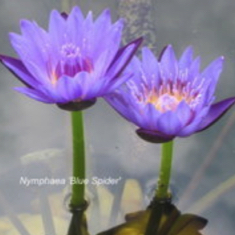
Water Lily Flower
Flower production requires a consistent water temperature of at least 75° F and full sun. The day blooming varieties open around midmorning and close by midafternoon while night blooming plants open around dusk and close by midmorning the next day, or later if it is cool or overcast.
Tropical water lilies, both day and night blooming varieties, continue to bloom for about three days and may have multiple blooms at one time. The flowers are held high above the water by as much as 12 inches. The day blooming varieties may be blue, purple, red, pink, yellow or white while night bloomers are red, pink or white. Flower shapes are cup, platter and star.
Leaves
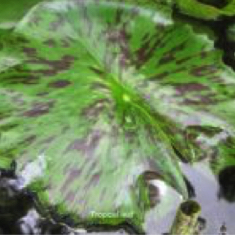
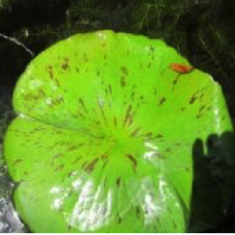
Water Lily Leaves
Leaves of tropical water lilies are oval with jagged, undulating, or irregular edges. Hardy varieties have round leaves with smooth edges. Tropical water lily leaves may be solid green or have bold splashes or dots of maroon. The size of water lilies is determined by how far the leaves spread. Small plants reach about 2′, medium 4-6′ and large over 6′.
Seed Reproduction
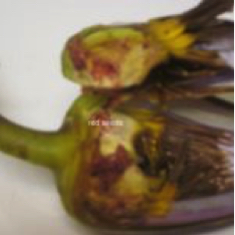
Red Seeds
After blooming for about three days water lily flowers start to deteriorate and drop into the water. If they were fertilized, seeds will develop and when they are mature the closed flower floats to the surface where the pod breaks open disbursing the seeds on the water surface. The seeds are coated in a gelatin like substance that soon deteriorates. The seeds are about the size of a grain of salt. Seeds from a hybrid tropical plant will not consistently produce offspring that look like the parent plant.
Tuber Reproduction
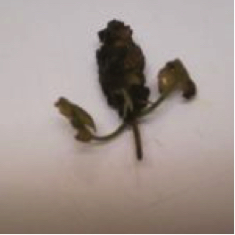
Water Lily Tuber
Some hybrids reproduce by tubers – a round walnut shaped structure from which new plants grow, coming up around the crown of the parent plant. The new leaves are smaller than the mature leaves of the parent plant. The plant will need to be removed from the pot and the soil gently washed off the roots and the tuber twisted off of the parent plant.
Viviparous Reproduction
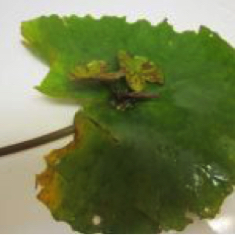
Viviparous Plant
Viviparous reproduction occurs on some plants by forming a new plant on the upper side of the leaf, above where the stem attaches on the bottom side of the leaf. At first a small nub appears and eventually it takes on the appearance of a miniature plant. The leaf deteriorates and the new plant may float away or it may stay attached to the stem until it too deteriorates, The advantage of viviparous plants is their ability to survive cooler temperatures. Examples of viviparous plants are N. ‘Tina’, N. ‘Panama Pacific’ and N. ‘Dauben’.